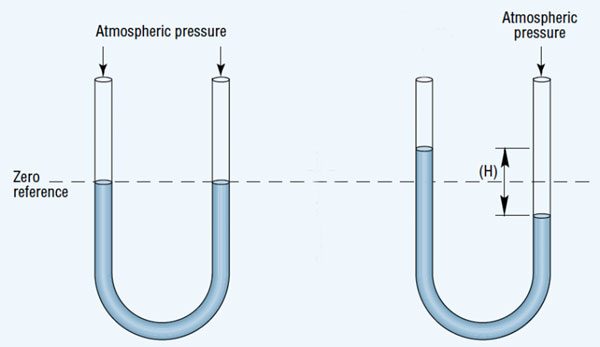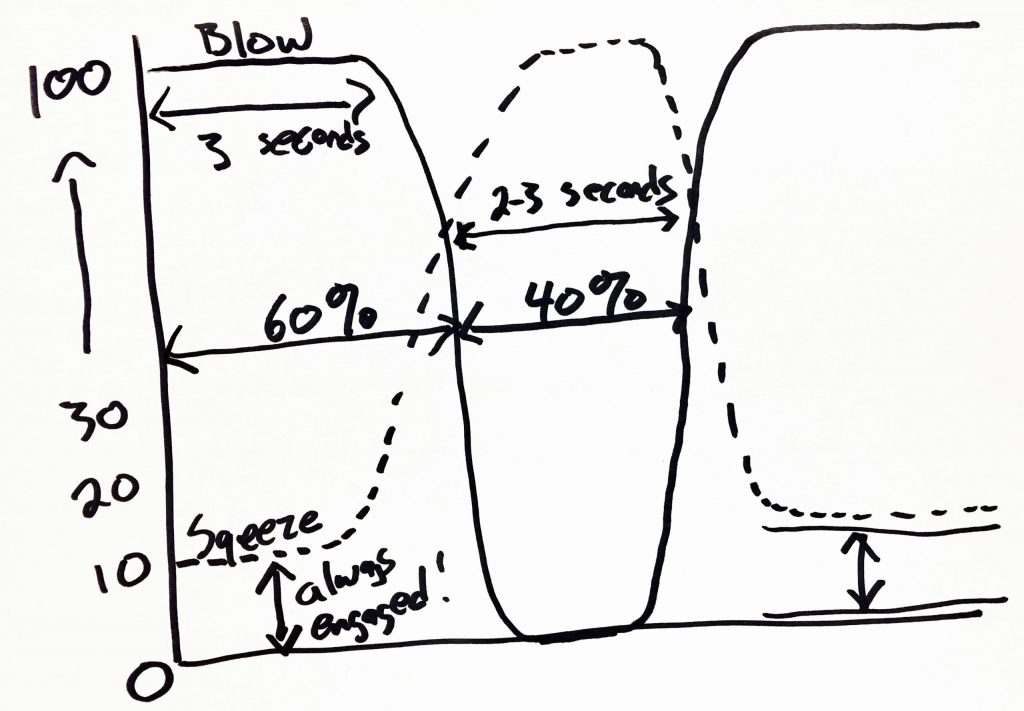Uncovering the Dangerous Psychological Pitfall in Steady Blowing

Blowing steadily and consistently at the chanter reed’s sweet spot is a learned task. Involves mastering a “trifecta” of skills: Identifying the exact pressure we want to blow steadily at, well-coordinated physical blowing skills, and the ability to avoid mental blowing anomalies caused by our brains as we try to navigate the difficult fingerwork of the bagpipes.
In a previous article, we outlined the attributes of good physical blowing and reviewed some exercises using a water manometer that help to improve any piper’s physical blowing technique.
Besides physical blowing errors, however, there is another area of unsteady blowing that we call “mental blowing anomalies”, which can be just as detrimental to a good sound as physical blowing problems.
Mental blowing errors can be defined as any unsteady blowing brought about by something that the fingers are doing while you play. It is one thing to play a single note and be a rather steady blower, but it’s entirely different when slowly going up and down the scale causes big surges or dips in the blowing.
The difference here is that for some reason(s), moving the fingers affects physical blowing. As our brains shift focus away from the process of blowing steadily in order to tend to complex finger motions, we tend to experience unpredictable and unmusical lapses in the steadiness of our blowing.
This article will dive deeply into this phenomenon.

As with learning good physical blowing by using a manometer, mental blowing mistakes can be clearly brought out with this great tool. But before we get into details, let’s recall several facts pertinent to good tone.
First, the goal is to blow with a high enough pressure and to maintain that pressure at the chanter reed’s sweet spot. That pressure maximizes the vast number of harmonics of the chanter reed, producing a rich, full, and pleasing sound. [Link: “More on finding the sweet spot can be learned here.]
Second, tuning of the drones and chanter is difficult, if not impossible to achieve while blowing at a pressure anywhere below the sweet spot.
Third, and this is where mental blowing errors come in, the air pressure must remain constant, regardless of what note is played on the chanter!
It is an unfortunate myth that some chanter notes “take more air pressure” than other notes. Think about this logically. Would it really make any sense to blow harder or softer on any one or more of the nine notes on the bagpipe scale?
If one were to over blow on High A, for example, what would happen to the next note that follows? It would be sharp because we’d be blowing “too hard” on that note. The opposite would be true of notes on either side of a note that was under-blown. The fact remains that the air pressure in the bag must be held constant, at the sweet spot, and the drones and chanter subsequently tuned at that same pressure.
To get an idea about how mental blowing anomalies may interfere with your own blowing, hook up the manometer to one of the tenor drones. Strike in and play only a Low A. Once the water level stabilizes, and while blowing as steadily as you can, simply drop the pinky finger and play Low G. Did the water level change at all? Did it drop, which is the most common change?
If the water level remained constant during the note change, congratulations! But if it changed at all, you have just witnessed a mental blowing anomaly, brought about by moving only one finger.
The purported reasons behind why finger movements may cause changes in our blowing are many, and those reasons are perhaps more academically interesting than they are of practical importance. But some of the more common blowing changes will be mentioned here, for completeness’ sake.
Blowing surges are common when playing top hand notes, particular High A and High G. Some suggest that the reason might be related to the relative “quietness” of those notes, and there’s an unwitting urge to “make them louder”, or to blow harder to make them sound “better”. Others have suggested that with those two notes, the chanter itself is less supported by the top hand, and there’s a tendency to tense up, resulting in brief overblowing. Remember, all the notes ultimately need to take the same amount of air pressure.
What about bottom hand notes? It is common when playing Low A and Low G to let OFF on the blowing pressure. Some think that’s because of how loud those notes are, and there’s a subconscious tendency to make the “quieter”. But regardless of suspected “reasons” behind the mental blowing anomalies, it is critical to first recognize their existence, and to do something about it.
Now, back to the manometer, on our journey to obliterating mental blowing anomalies. Start on Low A, pausing for two or three blowing cycles, then go to B and pause again. Then to C, and up the scale. Spend two or three blowing cycles on each note, long enough for you to observe what the water level (air pressure) is doing during each note change. Did the pressure surge on High A? Playing the scale slowly is a great way to become self-aware of mental blowing anomalies.
After several sessions with the manometer, and playing only scales, get a little more adventurous and play some arpeggios and other scale runs. While watching the manometer, increase the tempo very slightly and challenge yourself to maintain blowing steadiness with every note change.
With time and focused effort, your blowing steadiness will improve through enhanced physical blowing mechanics and through recognizing and dealing with mental blowing anomalies. At this point, you will be ready to take on simple tunes, such as a slow air that you can play well from memory. If you can maintain the water level fairly consistently around the sweet spot during an entire slow air, it’s time to get a bit more complicated with slightly advanced tune types.
Learning to become a truly steady blower may take a long time, but the effort put into the process will pay huge dividends, regardless of whether you’re part of a band, or simply enjoy solo piping.
Download the Steady Blowing "Trifecta" Free PDF Guide

Click Here to download a free PDF eBook teaching you the Steady Blowing "Trifecta."





Responses